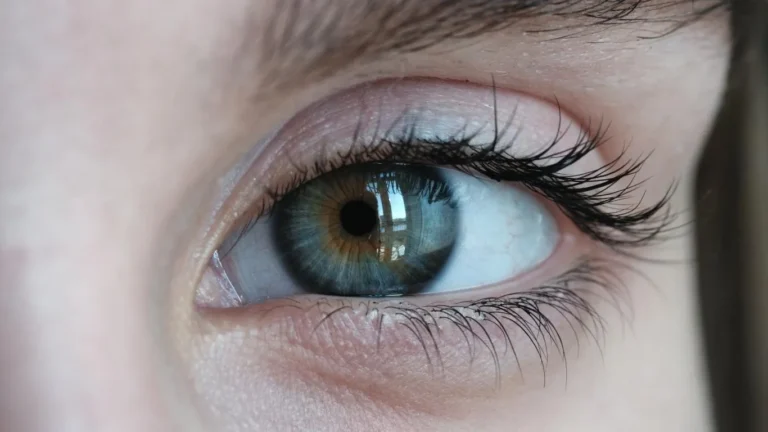Cold Feet Could Signal Hypertension: What Your Body Is Telling You
Have you ever noticed your feet feeling cold even when the rest of your body is warm? It might seem like a small problem, but for some people, it could point to something bigger—like high blood pressure, also known as hypertension. While cold feet can have many causes, there may be a surprising link between circulation problems from hypertension and the temperature of your feet. Knowing how your body works can help you understand what’s normal and when to check in with your doctor.
Understanding Hypertension and Circulation
Hypertension is a medical term for high blood pressure. It means the force of your blood pushing against the walls of your blood vessels is too high. Over time, this pressure can damage your blood vessels, especially the smaller ones in your hands, feet, eyes, and kidneys.
Your circulatory system is responsible for carrying blood, oxygen, and nutrients all over your body. This system includes the heart, arteries, veins, and capillaries. When everything is working well, blood flows freely to all parts of your body—including your toes.
But when you have hypertension, your blood vessels can become stiff or narrow. This makes it harder for blood to reach the farthest parts of your body, like your feet. That reduced blood flow might make your feet feel colder than usual.
How Circulation Affects Foot Temperature
Blood plays a big role in keeping your body warm. When warm blood moves through your arteries, it helps maintain a comfortable temperature in your skin and limbs. If something slows down that blood flow, parts of your body—like your feet—can feel chilly.
High blood pressure can slowly damage the inner lining of your arteries, leading to a condition called peripheral artery disease (PAD). PAD happens when arteries in the legs and feet become narrowed or blocked. This reduces the amount of oxygen-rich blood reaching your lower limbs, which may result in cold feet or toes.
Other health issues related to hypertension, like diabetes or high cholesterol, can make circulation even worse. In these cases, cold feet are more than just uncomfortable—they can be a signal that your blood vessels aren’t working the way they should.
Possible Causes of Cold Feet in People With Hypertension
Cold feet can happen for lots of reasons, and not all of them are related to high blood pressure. But when hypertension is involved, here are a few possible explanations:
- Peripheral artery disease (PAD): This common condition is linked to both hypertension and poor blood flow in the legs and feet.
- Narrowed or stiff arteries: Over time, high blood pressure can cause blood vessels to harden, making it harder for blood to reach your extremities.
- Nerve damage: Hypertension can also lead to nerve problems, especially if you also have diabetes, which may affect how your body senses temperature.
- Cold sensitivity: Some people naturally have lower circulation in their hands and feet, and high blood pressure may make this worse.
- Medication side effects: Certain blood pressure medications, especially beta blockers, can lower blood flow to the limbs as a side effect.
Cold feet might be more noticeable in the winter, when your body is already trying to conserve heat. But if your feet stay cold no matter the weather—or if you also notice other symptoms—it’s worth mentioning to your doctor.
Other Symptoms That May Come With Cold Feet
When cold feet are related to a circulation problem, you might also notice other signs, including:
- Color changes in the skin: Feet that look pale, bluish, or purplish could be a sign of poor blood flow.
- Numbness or tingling: This can happen when nerves aren’t getting enough oxygen-rich blood.
- Shiny or thin skin: Skin on the feet and legs might start to look different if blood isn’t flowing normally.
- Hair loss on the legs or feet: Poor circulation can cause hair to fall out in these areas.
- Pain while walking: This may feel like a cramp in your calf or foot that goes away with rest, a classic sign of PAD.
These symptoms don’t always mean something serious, but they are important clues. Your healthcare provider can run simple tests to check the health of your arteries and blood flow.
When to Talk to a Doctor
It’s easy to dismiss cold feet as a minor annoyance, but they can sometimes be a sign of a bigger health issue. You should contact a healthcare provider if:
- Your feet are often cold, even when you’re warm or indoors
- You notice color changes, especially if your feet turn pale or bluish
- You have pain in your legs or feet when walking that improves with rest
- There’s numbness, tingling, or loss of sensation
- You have a history of high blood pressure, diabetes, or heart disease
Your doctor might check your blood pressure, look at your feet and legs, and possibly use an ultrasound or blood flow test to see how well your blood is circulating. Treating the underlying cause—like managing your hypertension more closely—can help improve symptoms and protect your health long-term.
In the meantime, simple steps like staying warm, wearing proper socks, and doing regular gentle exercise can support healthy circulation. Cold feet aren’t always a sign of something serious, but if they persist or come with other changes, don’t ignore them. Talk to your doctor and get the support you need to stay comfortable and healthy.

Dr. Gwenna Aazee is a board-certified Internal Medicine Physician with a special focus on hypertension management, chronic disease prevention, and patient education. With years of experience in both clinical practice and medical writing, she’s passionate about turning evidence-based medicine into accessible, actionable advice. Through her work at Healthusias.com, Dr. Aazee empowers readers to take charge of their health with confidence and clarity. Off the clock, she enjoys deep dives into nutrition research, long walks with her rescue pup, and simplifying medical jargon one article at a time.






